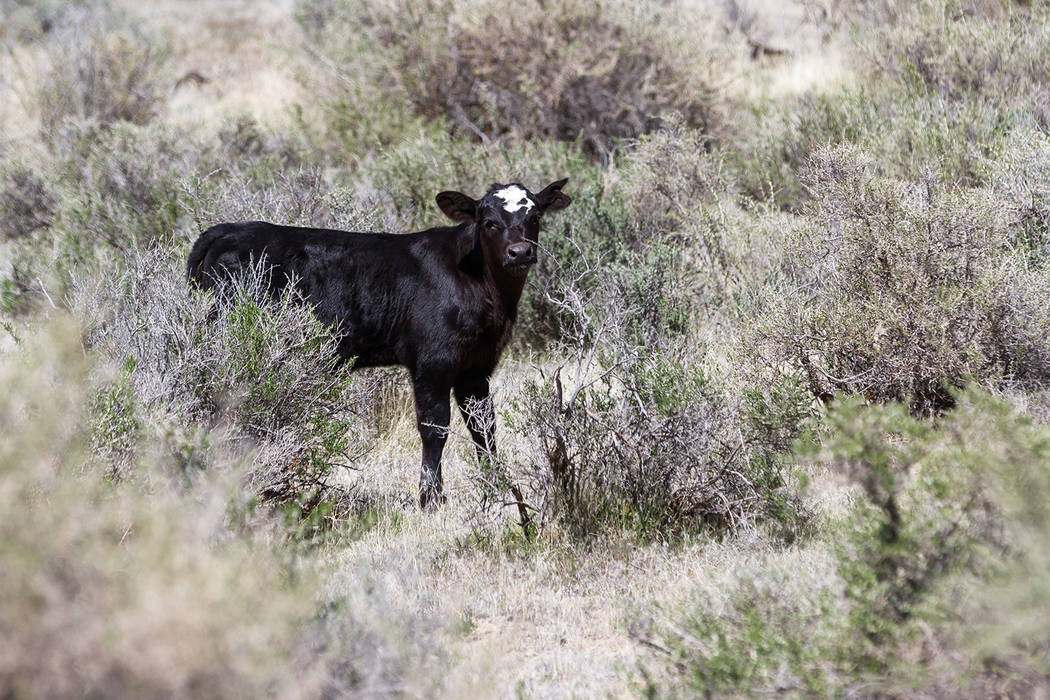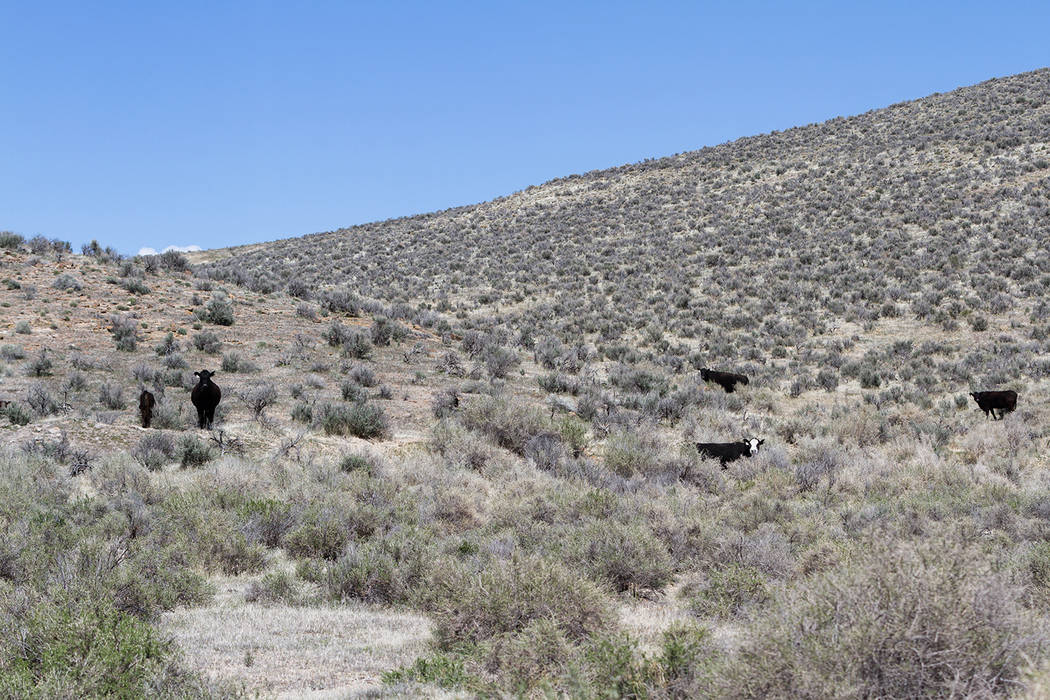Grazing regulations up for revision
The Bureau of Land Management is currently in the processing of revising its grazing regulations, filing a notice of intent with the Federal Register in late January to prepare an Environmental Impact Statement detailing how the proposed changes could effect the land and wildlife.
The public is invited to submit comments regarding the revisions. Comments can be submitted in writing until March 6 via regular mail or email. Comments can be mailed to Bureau of Land Management, ATTN: Sean Flanigan, 3948 S. Development Avenue, Boise, ID, 83705 or emailed to BLM_WO_grazing_email@blm.gov
There will also be a public scoping open house hosted in Nevada, scheduled for Tuesday, Feb. 18 at the Elko Convention Center, 700 Moren Way. The open house will run from 4:30 to 7:30 p.m. and interested parties may stop by anytime during those hours.
“Administration of sustainable livestock grazing on public lands is a key part of the Bureau of Land Management’s multiple-use mission,” Acting Assistant Secretary of Land and Minerals Management Casey B. Hammond was quoted as stating. “This rule-making effort is designed to strengthen and improve our administration of grazing permits across the West and we welcome public and stakeholder ideas and perspectives.”
Nearly 98 percent of the total land area in Nye County is controlled and managed by federal government agencies such as the U.S. Department of Defense, U.S. Department of Energy, U.S. Fish and Wildlife, U.S. Forest Service and of course, the BLM, with just two percent held in private ownership.
The Pahrump Valley Times reached out for additional information specific to grazing in Nye County and Nevada, with BLM Nevada State Office Public Affairs Specialist Chris Rose responding.
Rose said the BLM currently has more than a dozen grazing permits and leases in Nye County, a vast majority of which are located in the central and northern parts of the county, with one grazing allotment, Wheeler Wash, partly located in the far southern portion of the county. Of the 155 million acres of grazing land managed by the BLM, approximately 6.5 million acres are within the borders of Nye County.
As to the financial impact of grazing, Rose stated, “Economic contributions from grazing nationwide on BLM lands are approximately $2.5 billion. In Nevada, the economic contributions from grazing total $299.7 million.”
While grazing is big business in America, particularly in the West, there are many who harbor concerns about allowing livestock to browse across vast swaths of land. The heart of those concerns lies in the potential for grazing to negatively impact the environment, apprehension that is not with evidence to support it.
According to information from the U.S. Fish and Wildlife Service, grazing can in fact cause damage to both plants and the animals that depend on them.
“Grazing affects the species composition of a plant community through herbivores selecting or avoiding specific plants,” the service’s website explains. “Continued selective grazing can reduce the vigor of grazed plants and release ungrazed species from competition. Trampling can also indiscriminately injure plants and may reduce their competitive and reproductive capacities within the plant community.”
The website goes on to state that grazing can change vegetative structure and impact the production, dispersal and germination of seed. “Grazing animals can decrease flower and seed production directly by consuming reproductive structures, or indirectly by stressing the plant and reducing energy available to develop seeds. Grazing animals can also disperse seeds by transporting seed in their coats, feet or digestive tracts.” The transporting of seeds is a major concerns for some, as this can contribute to the spread of invasive species.
However, grazing is not all bad news, the U.S. Fish and Wildlife Services details. It can also provide a variety of benefits to the land, so long as it is done properly.
“While wildlife habitat may be degraded by mismanaged livestock grazing, proper management often improves wildlife habitat,” information from the service reads, going on to state, “Grazers enhance mineral availability by increasing nutrient cycling within patches of their waste and increasing nitrogen availability to plants.”
Fire risk is another area in which the U.S. Fish and Wildlife Service says grazing can be helpful. “Grazing alters fuel-load characteristics by changing plant community composition, structure and biomass. Altered fuel loads can change fire-return cycles, fire intensity and spread patterns… Grazing can be used to intentionally manipulate fire fuel loads in prescribed burning programs.”
The bottom line seems to be management itself, with the Fish and Wildlife Service explaining, “In human-controlled grazing systems, the detrimental or beneficial effects of grazing are largely determined by how and where grazing is used. The negative impacts of grazing are often the result of misuse. The benefits of livestock grazing rarely come by accident and are likely the result of careful program design, regular monitoring and flexibility in modifying treatments.”
As detailed by a news release from the BLM, the proposed gazing regulation revisions are aimed at updating, modernizing and streamlining said regulations and providing “greater flexibility for land and resource management.”
Documents regarding the proposed revisions can be found online at go.usa.gov/xyMqb
For more information contact BLM Project Manager Seth Flanigan at 208-384-3450 or BLM_WO_grazing_email@blm.gov
Contact reporter Robin Hebrock at rhebrock@pvtimes.com


















